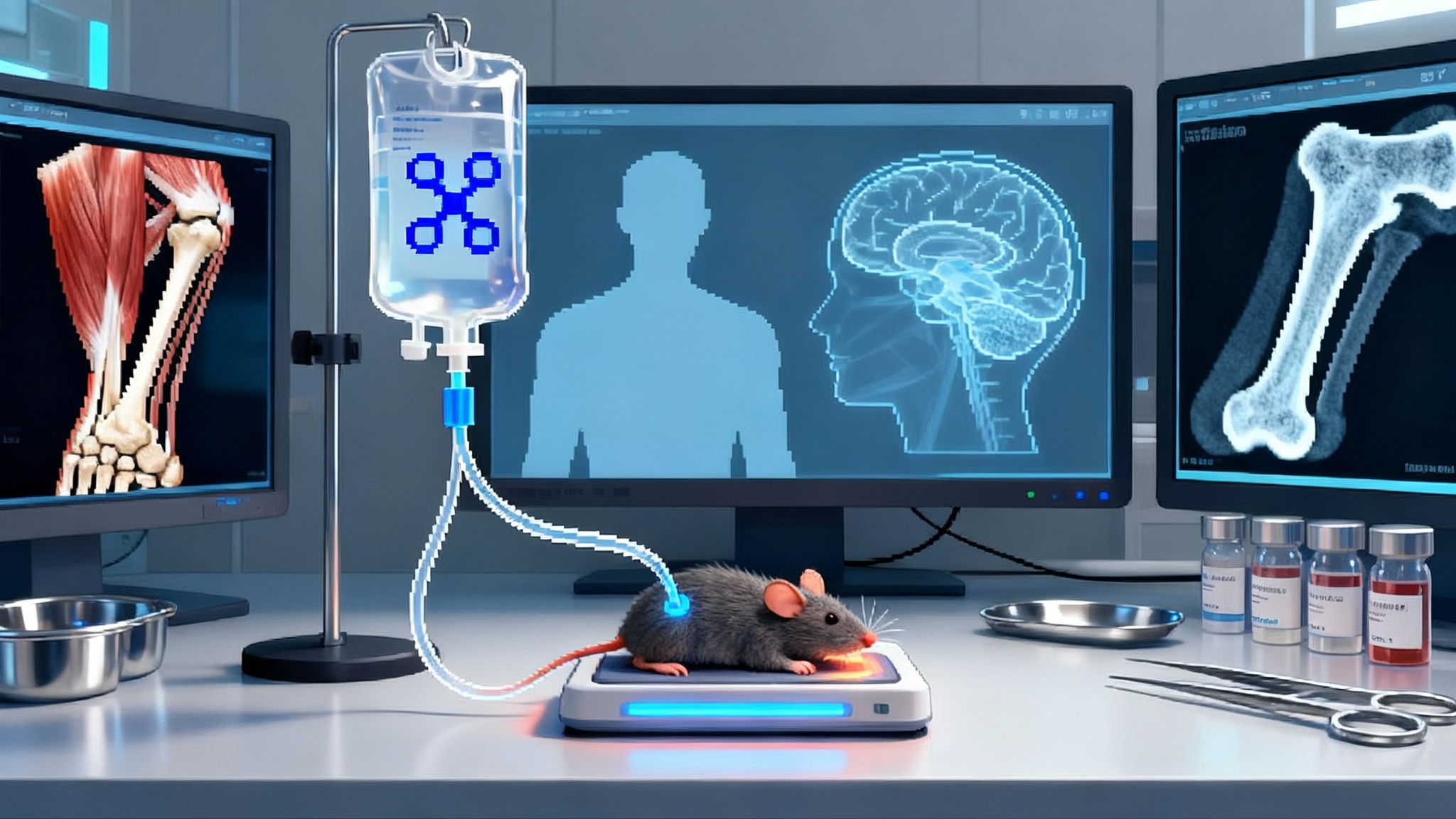Pets take point: 2025’s leap in longevity drug approvals
In 2025, a weekly sirolimus tablet for cats won conditional FDA approval and a senior-dog longevity pill cleared a key efficacy review. Pet medicine is becoming the proving ground for geroprotectors, and this blueprint shows how it translates to humans.

The breakthrough year that made pets pathfinders
Two regulatory firsts in early 2025 quietly reset the pace of longevity science. In March, the Food and Drug Administration’s Center for Veterinary Medicine granted conditional approval to Felycin-CA1, a sirolimus tablet given once a week to manage ventricular hypertrophy in cats with subclinical hypertrophic cardiomyopathy. It is the first approved product for any indication in feline HCM, and it establishes a precedent that a mechanistic geroscience drug can win a label grounded in organ function and disease modification, not only symptom relief. The agency’s notice specifies a target dose of 0.3 milligrams per kilogram weekly and lists TriviumVet as the sponsor, along with tablet strengths of 0.4, 1.2, and 2.4 milligrams. That clarity matters because it converts a decade of rapamycin-class debate into an actionable dosing framework for veterinarians and researchers alike. FDA conditional approval for feline HCM.
Two weeks earlier, Loyal, a San Francisco animal health company, announced that the FDA had accepted the Reasonable Expectation of Effectiveness section of its application for LOY-002, a daily oral drug intended to extend healthy lifespan in senior dogs. This is the same regulatory step Loyal earned in 2023 for a program focused on large dogs, but in 2025 the agency recognized a broader senior-dog indication. The company now targets completion of safety and manufacturing requirements to seek conditional approval. That progression signals something subtle but important: regulators are getting comfortable evaluating geroprotectors on concrete, species-appropriate outcomes rather than waiting for all-cause mortality curves to mature. FDA accepts LOY-002 efficacy package.
Together these milestones mark veterinary geroscience’s breakout year. Cats and dogs are not stand-ins for humans, but they are living in our homes, sharing our environments, receiving real medical care, and aging on timelines that allow pragmatic trials. When regulators codify how to assess benefit in pets, they also sketch a template that human programs can adapt. The rest of this piece translates those 2025 steps into a blueprint for the first wave of human healthspan trials in 2026 through 2028.
Why these two green lights matter
Conditional approval and reasonable-expectation findings are not victory laps. They are regulatory bets that the signal is strong enough to justify supervised real-world use while more evidence accrues. In cats, the agency accepted that weekly sirolimus can improve or stabilize a cardiac substrate tied to bad outcomes. In dogs, the agency acknowledged a testable claim that a pill can extend healthy time in older animals. The common thread is a shift away from a single, slow endpoint and toward integrative, earlier readouts that still map to risk and quality of life.
Just as important is what each ruling operationalizes.
- Dosing math and exposure windows. Weekly sirolimus in cats provides pharmacokinetic contours that can be modeled against existing human data, making it easier to design titration schemes and safety monitoring plans for early human studies that aim to target mammalian target of rapamycin without immunosuppression.
- Feasible, clinic-friendly procedures. Echocardiography for left-ventricular wall thickness, owner-reported function, and safety labs fit in routine veterinary workflows. In dogs, frequent at-home activity tracking and regular check-ins have already become standard in large, pragmatic trials. These procedures translate well to outpatient human studies.
- Regulated claims beyond symptoms. A label built on slowing ventricular hypertrophy inches closer to the goal of disease modification. In canine aging, a regulator saying an intervention has a reasonable expectation of extending healthy lifespan unlocks the right to test and market under supervision. Both widen the aperture for human programs that want to claim prevention or delay, not only palliation.
The translational blueprint: from living rooms to clinics
The promise of pet geroscience for people is not a one-to-one biological shortcut. It is a pipeline advantage. It gives drug developers, regulators, and payers a shared playbook built on the same classes of biomarkers, the same pragmatic endpoints, and a clearer path to value.
1) Shared biomarkers that actually move with age
When you strip away species, aging looks like a set of measurable drifts across systems. The job is to pick those drifts that are both responsive to intervention and predictive of outcomes.
- Frailty. In dogs, simple composite scores that add up gait speed, rise time, weight loss, activity, and owner-reported vitality capture real risk. Cats can be scored on jump height, grooming frequency, and lean mass. Humans already rely on gait speed, grip strength, and unintentional weight loss. Standardizing a cross-species frailty framework lets us compare effect sizes and durability of response.
- Cardiac structure and function. Feline HCM gives human cardiology a concrete marker: thickness of the left ventricular wall and diastolic function. In aging humans without overt heart failure, left atrial volume, strain, and natriuretic peptides can serve similar roles. The key is to pre-specify a composite that mixes structure with function and symptoms.
- Proteomic and epigenetic clocks. In both pets and people, multiplex proteomics captures inflammation, complement, clotting, and growth-factor signaling that drift with age. Epigenetic clocks offer rate-of-aging estimates. None should be treated as surrogate outcomes on their own, but when they move in parallel with clinical endpoints they increase confidence that the mechanism is causal rather than cosmetic. See how system-level biomarkers can bend in our coverage of the first RCT bends biological age.
- Metabolic integrity. The dog longevity pill targets age-related metabolic dysfunction. In humans, waist circumference, fasting insulin, homeostasis model assessment, triglyceride high-density lipoprotein ratio, and hepatic fat fraction by magnetic resonance imaging are practical and sensitive. These respond on time scales of weeks to months, ideal for phase 2 trials.
- Immune competence. Felycin-CA1’s sponsor ran a vaccine response study to show sirolimus at a weekly dose did not blunt core immunity. That design choice is portable. Human geroprotector trials can pre-specify vaccine response panels as on-target safety guards for pathways like mammalian target of rapamycin and Janus kinase signal transducer and activator of transcription. For adjacent strategies, see Thymus Revival 2025 insights.
The principle is simple: build a biomarker battery that hits function, structure, multi-omic drift, and a mechanistic safety stop. Then require at least two of these domains to move in a coherent way alongside clinical endpoints.
2) Pragmatic endpoints that regulators can accept
Veterinary medicine has always needed endpoints that fit the realities of busy clinics and home life. That constraint is a gift to human aging studies.
- Time to meaningful clinical events. In dogs, events might include onset of mobility impairment that limits daily activity, first episode of incontinence, or veterinary hospitalization. In humans aged 55 to 75, think time to first new prescription for an age-linked condition, unplanned hospitalization, or a clinically significant drop in gait speed.
- Digital endurance. Dogs wear collar accelerometers. People carry phones and can wear low-profile sensors. A pre-specified change in daily ambulatory minutes or peak continuous walking duration captures function without lab visits and provides dense data for safety signals.
- Owner and patient quality-of-life scales. Veterinary studies rely on validated questionnaires completed by owners who see their animals every day. Human studies can use short, repeatable instruments like Patient-Reported Outcomes Measurement Information System mobility and fatigue with thresholds for minimal clinically important differences.
- Composite success criteria. For a six-month phase 2 study, define success as meeting two out of three targets: improved gait speed, reduced inflammatory proteomic score, and preserved or improved cardiac relaxation indices. This reduces the odds of a false win while allowing individualized response patterns.
3) Payer models that make prevention pay
A new class of drugs needs a way to be bought before the first major disease arrives. Veterinary medicine is already building that model.
- Pet insurance coverage for chronic prevention. Insurers are adding riders for aging-related drugs that reduce later claims. Reimbursement hinges on clear diagnostic criteria, scheduled rechecks, and real-world evidence feeds. The same structure maps to self-insured employers in human health.
- Clinic membership and wellness plans. Veterinary groups bundle preventive drugs with annual exams, diagnostics, and digital check-ins. Human primary care groups can do the same, especially direct primary care and advanced primary care networks that own total cost of care.
- Outcome-based contracts. A veterinary manufacturer can rebate part of drug cost if mobility or hospitalization metrics do not improve. In people, value-based purchasing contracts can peg payment to reductions in emergency visits or preservation of functional independence. Primary prevention is already moving mainstream in cardiometabolic care, as seen in PCSK9 base editing and prevention.
The lesson from pets is not just how to measure benefit but how to route dollars through the system so that prevention is financeable.
From cats and dogs to humans: a step-by-step playbook for 2026 to 2028
This is a practical path to a first wave of human healthspan trials that borrow the best of 2025’s veterinary breakthroughs.
- Choose the right population. Start with adults aged 55 to 75 at elevated biological risk but without a dominant disease that will swamp the signal. Criteria could include a frailty score just above normal, borderline diastolic dysfunction on echocardiogram, and a proteomic age acceleration greater than two standard deviations.
- Select a mechanism anchored in pet data. Rapalogs, insulin signaling modulators, and senomorphic combinations are logical first candidates. Weekly or intermittent dosing schedules that spare immune function mirror the feline cardiac program and can be modeled to human exposures. If metabolic drift is the target, use the canine approach as a template for markers and expected timelines.
- Build a dual-domain endpoint. Pair a functional measure with a biomarker panel. For example, a trial might define its primary endpoint as a composite of a 0.1 meter per second gain in four-meter gait speed plus a ten percent reduction in an inflammatory proteomic score at six months. Secondary endpoints would include diastolic function metrics, grip strength, and patient-reported outcomes.
- Bake in immune safety. Borrow the vaccine response substudy from the cat program. Pre-vaccinate at baseline with a standard adult booster, then repeat titers at predefined intervals to ensure preserved humoral response. Track infection rates as an exploratory endpoint.
- Make it pragmatic by design. Use primary care clinics, not specialty centers. Place sensors that require no charging and design data capture that fits normal life. Ship study drug directly, collect adverse events by text, and schedule short clinic visits for imaging or bloodwork.
- Pre-commit to transparency. Veterinary regulators have shown that clear, staged packages win trust. For people, share statistical analysis plans and publish negative secondary endpoints alongside positives so that the field can learn quickly.
- Align the payer from the start. For an employer-sponsored pilot, commit to co-primary outcomes that translate to claims: fewer short hospital stays and maintained independence measures. Offer a risk-share where drug cost is rebated if these targets are missed.
If this looks like a lot, that is the point. Aging is not a single disease, so the endpoints and the incentives have to be plural too. The pet programs prove you can orchestrate this complexity without losing rigor.
What the cat sirolimus tablet teaches about mechanism and safety
Felycin-CA1 targets a pathway many human geroscience programs care about. Mammalian target of rapamycin integrates nutrient signals with growth and repair. In hearts under chronic stress, dialing down mammalian target of rapamycin appears to reduce pathological hypertrophy and improve diastolic compliance. The feline label is built on a population with thickened heart walls but no overt symptoms. That is precisely where prevention should act.
The dose and weekly schedule are the underappreciated gifts. They encourage developers to think in terms of exposure and recovery, not only total area under the curve. In people, that enables regimens that minimize cytopenias and mucosal side effects while preserving the beneficial remodeling signal. The sponsor’s demonstration that vaccine responses remain intact at the cat dose also gives human regulators a clear template for on-target safety checks.
What the dog longevity pill teaches about endpoints and operations
LOY-002 is designed for senior dogs of many sizes and aims to slow the metabolic drifts that make older animals vulnerable. The regulatory acceptance of a reasonable expectation of effectiveness validates the idea that an aging-targeted claim can be framed in endpoints beyond mortality. It also shows how large, pragmatic trials can be orchestrated at scale across dozens of community clinics with owner-reported outcomes and wearables.
For human studies, the operational lessons are straightforward.
- Treat adherence as a design variable. Taste-masked daily pills for dogs sound trivial, but they are a reminder that older participants need regimens they can live with. In people, that means long half-life dosing where possible and blister packs with simple, visual instructions.
- Choose endpoints owners and patients understand. If a dog is climbing stairs better and has fewer bad days, owners notice. The analog for humans is recovery from exertion, time to get up and go, and unplanned care. These measures are easy to explain and hard to game.
- Keep trial visits light. The veterinary model shows you can get high data fidelity with a few focused clinic visits plus passive data capture. Do the same in people to recruit diverse participants who have jobs and caretaking responsibilities.
Risks you can plan for
Every geroprotector raises the same concerns: off-target immune effects, medicalization of normal aging, and selective access. Veterinary programs offer concrete strategies to address each.
- Immune risk. Use the vaccine response substudy and predefined infection surveillance. Make dose reductions part of the protocol rather than rescue measures.
- Overreach. Anchor claims to specific functional and structural outcomes and prespecify stop rules that require measurable benefit. Prevention that never shows up in function is not prevention worth paying for.
- Equity. The pet world is building financing mechanisms that reduce up-front costs through insurance riders and clinic memberships. Human pilots can copy this architecture inside employer plans and community health centers, ensuring access does not hinge on wealth.
What to watch next
- Real-world performance of weekly sirolimus in cats with subclinical HCM. Expect data on adherence, echocardiographic trajectories, and safety in the first year of broad use. These will inform dose titration and monitoring schemes for human rapalog trials.
- The conditional approval path for the senior-dog drug. Manufacturing, safety, and expanded clinical data will fill out the package. Recruitment and retention patterns from large, community-based trials will help human sponsors predict drop-off and data completeness in pragmatic designs.
- The rise of combined interventions. Veterinary programs are a natural lab for pairing drugs with diet, dental care, and structured activity. Positive combinations will pressure human programs to adopt multi-modal designs that reflect how people actually live.
The bottom line
This year, regulated pet medicine crossed from promise to practice for longevity science. A weekly sirolimus tablet for cats won a label that aims at the architecture of disease rather than its late symptoms. A senior-dog pill earned a regulatory nod that its goal of extending healthy life is realistic enough to pursue under supervision. These are not curiosities. They are working proofs that aging biology can be regulated, paid for, and studied at scale.
If human geroscience wants to accelerate in 2026 to 2028, the way forward is clear. Lift the cross-species biomarkers that change with age and respond to intervention. Pre-specify pragmatic endpoints that matter in daily life and map to real costs. Borrow payer models that make prevention billable. Then run trials where people actually live. The pets have shown the route. It is time to start walking it.








